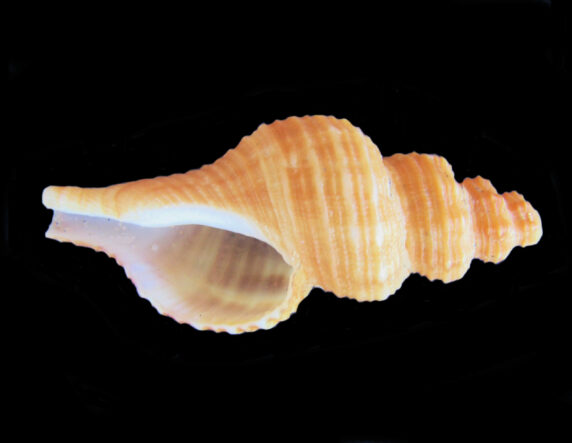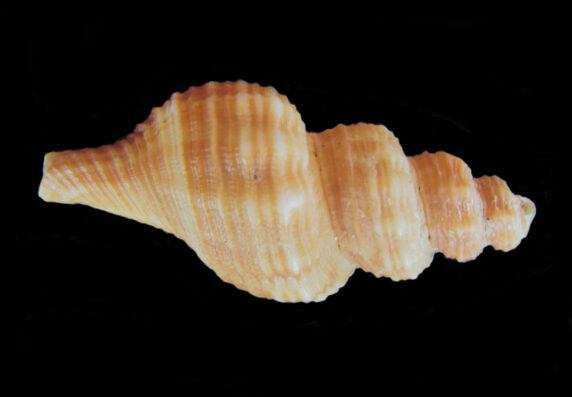Fred Baker’s Spindle Shell, Hesperaptyxis fredbakeri

 Fred Baker’s Spindle Shell, Hesperaptyxis fredbakeri. Size: 4.2 cm (1.7 inches) x 1.7 cm (0.7 inches). Shell collected from within the estuary of the Magdalena Bay complex, Baja California Sur, October 2018. Collection, photograph and identification courtesy of Bob Hillis, Ivins, Utah.
Fred Baker’s Spindle Shell, Hesperaptyxis fredbakeri. Size: 4.2 cm (1.7 inches) x 1.7 cm (0.7 inches). Shell collected from within the estuary of the Magdalena Bay complex, Baja California Sur, October 2018. Collection, photograph and identification courtesy of Bob Hillis, Ivins, Utah.
Fred Baker’s Spindle, Hesperaptyxis fredbakeri (H.N. Lowe, 1935), is a bivalve mollusk that is a member of the Fasciolariidae Family of Spindle, Horse Conchs and Tulips. The shell is named after Fred Baker, a physician, educator, and amateur malacologist in San Diego. He contributed significantly to the collections of the San Diego Natural History Museum and the Scripps Institution of Oceanography. The shell is light in structure and consists of seven whorls with numerous spiral ridges running along the whorls, a high spire, an open siphon canal with twelve strong ribs run the shell’s length and a medium sized oval aperture that has a thin outside lip that is unsculpted. The exterior of the shell is cream to brown in color, and may have white spiral and/or lengthwise lines; the interior is white to bluish, with some exterior color showing through. Fred Baker’s Spindle Shells reach a maximum of 4.9 cm (1.9 inches) in length and 2.0 cm (0.8 inches) in height.
Fred Baker’s Spindles are found attached to rocks at depths between 12 m (40 feet) and 100 m (340 feet). They are found in the Sea of Cortez from San Felipe, Baja California south to Santa Rosalia, Baja California Sur.
A synonym is Fusinus fredbakeri.